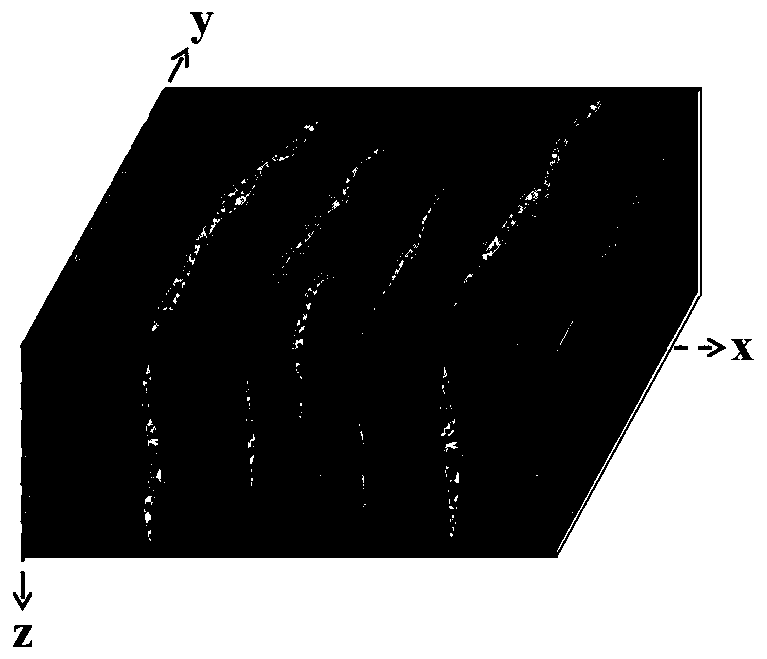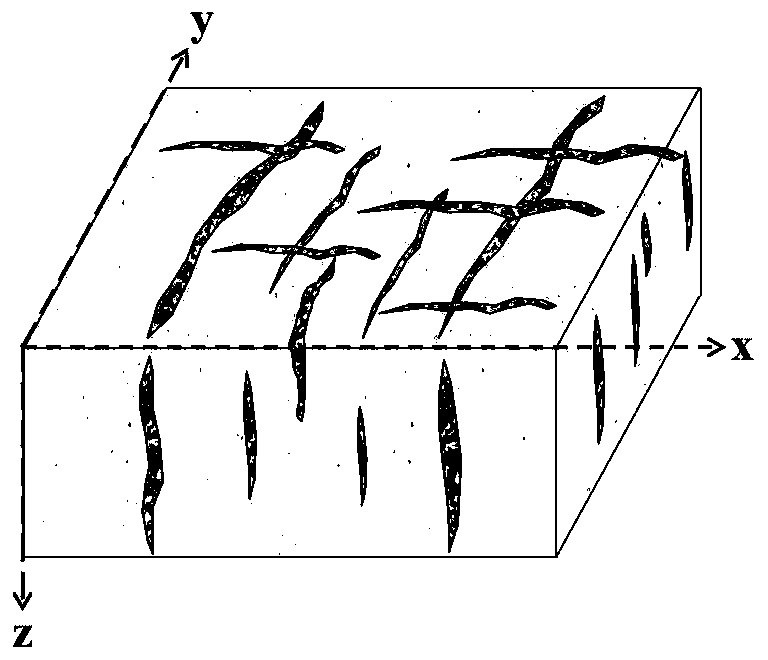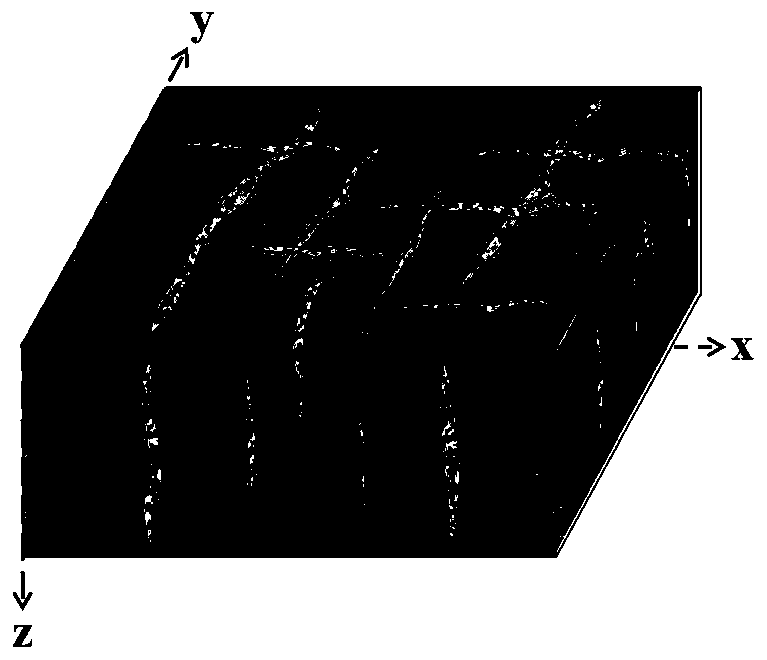Orthotropic dielectric fluid factor and fracture parameter inversion method.
An orthotropic, medium-fluid technology, applied in the field of physical inversion, can solve problems such as fluid and fracture property uncertainties
- Summary
- Abstract
- Description
- Claims
- Application Information
AI Technical Summary
Problems solved by technology
Method used
Image
Examples
Embodiment 1
[0129] Referring to Figures 1 to 16, an inversion method for fluid factors and fracture parameters in orthotropic media includes the following steps:
[0130]Step 1: Use the vertical and transverse isotropic medium in the dry rock background, and derive the stiffness matrix of the orthosymmetric anisotropic fractured medium according to the fracture weakness;
[0131] Horizontal thin layers with vertical fractures can be regarded as long-wavelength equivalent orthotropic media. When it is assumed that the dry rock skeleton is a porous rock in the VTI background composed of a set of horizontal fractures perpendicular to the x-axis, the dry rock stiffness tensor is as follows:
[0132]
[0133] 0 represents a 3×3 zero matrix, and Expressed as follows:
[0134]
[0135]
[0136] Here, δ N ,δ V and δ H is the dimensionless fracture weakness in different directions; δ N Expressed as normal weakness, related to the fluid filling; δ V and δ H denoted as vertical a...
Embodiment 2
[0205] Taking the well logging data in the gas-bearing fractured porous background as an example, the proposed Bayesian-EIVOAz inversion method for fluid and fracture separation is verified. Anisotropic logging information is first estimated using a petrophysical model. The process of constructing the rock physics model of the orthosymmetric fractured porous background medium, such as Figure 5 As shown, it is used to estimate the anisotropy logging information. Figure 6a , 6b and 6c show synthetic azimuthal seismic data. The six azimuth angles are 0°, 30°, 60°, 90°, 120° and 150° respectively. Then, a Bayesian-EIVOAz inversion that separates fluid factors and fracture properties is implemented. The original, initial and inversion logs of the model parameters are shown in Fig. 7, respectively. From the inversion results, it can be seen that even though the initial model is relatively smooth, the model parameters are reasonably estimated. Random Gaussian noise is added to ...
Embodiment 3
[0207] Referring to Fig. 13 to Fig. 16, this embodiment takes the actual data of the Sichuan Basin as an example to demonstrate the method of estimating fluid and fracture attributes using the Bayesian-EIVOAz method. The input seismic data of four azimuths are 22.5°, 67.5°, 112.5° and 157.5° respectively. The Bayesian-EIVOAz inversion is realized using partial angle stacked seismic sections shown in Fig. 11. The average incidence angles of near, medium and far angle stacks are 5° (range 0°-10°), 15° (range 10°-20°) and 25° (ranging from 20°-30°). The azimuthal elastic impedance profile obtained by inversion is shown in Fig. 12.
[0208] The estimated separation fluid factors and fracture parameters are shown in Figs. 13, 14 and 15. The right well with white curve and ellipse is used as the initial model, and the left well with gas-bearing response is used as the verification of the initial model. It is easy to find that the estimated values of fluid parameters and fractur...
PUM
 Login to View More
Login to View More Abstract
Description
Claims
Application Information
 Login to View More
Login to View More - R&D
- Intellectual Property
- Life Sciences
- Materials
- Tech Scout
- Unparalleled Data Quality
- Higher Quality Content
- 60% Fewer Hallucinations
Browse by: Latest US Patents, China's latest patents, Technical Efficacy Thesaurus, Application Domain, Technology Topic, Popular Technical Reports.
© 2025 PatSnap. All rights reserved.Legal|Privacy policy|Modern Slavery Act Transparency Statement|Sitemap|About US| Contact US: help@patsnap.com



